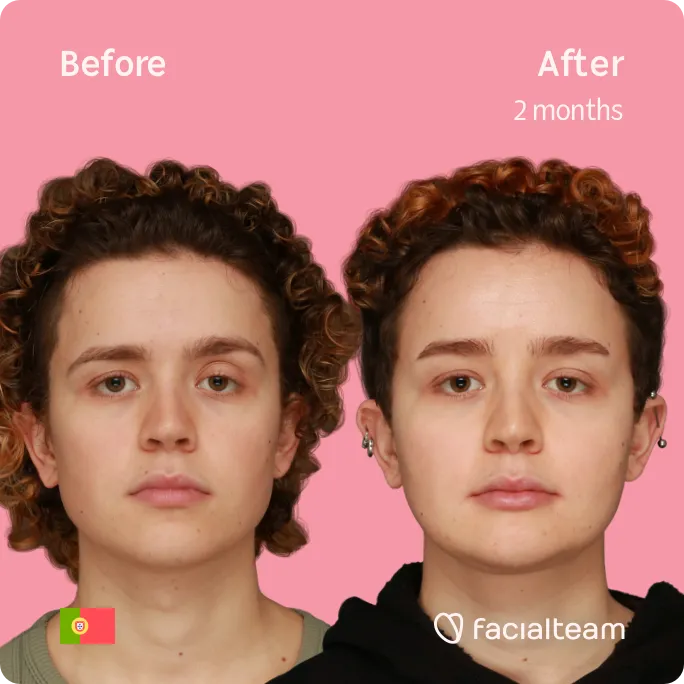Review FFS Providers’ Websites

I believe my early online searches were for “FFS surgeons” which took me to some web pages with transgender resource listings. They didn’t have much more information than lists of surgeon’s names and their locales. Once I had the names for some FFS surgeons my search led me to their websites.
Some were plastic surgeons and from their websites was not obvious that they did FFS or that they had experience with trans patients. I took this to mean that if they did FFS it was not a big part of their practice and therefore they might not have as much experience compared to those that did mention FFS. At this point I was already making assumptions of the surgeons’ practices just by what I saw or didn’t see on their websites.
Finding the right FFS surgeon is not easy, in this article I explain what I focussed on and looked for when checking out the FFS surgeons’ websites when trying to find the best fit.
How I used FFS surgeons’ websites
In those early days I wanted to learn about the possible FFS procedure as well as to have a short-list of surgeons that I could approach to in turn learn more about them. Rather than looking at discussion forums or transgender support groups I wanted to get that information by myself. The reason for that is that I believe than in discussion forums or support groups the conversations always have some “colouring” or “tinting” from the perspective of the poster. I prefer to read the “official” information posted on a surgeon’s website, read in between the lines, and form my own criteria. In effect create my own “colouring” or “tinting”. I don’t know if it’s more or less work than trying to get the information I wanted (procedures and surgeon references) by reading or involving myself in personal discussions, but personally that approach does not satisfy me.
The FFS surgeons’ websites were probably the most important elements of my online research. The surgeons’ websites are one of their official outlets and as such they can communicate a lot of valuable information about their practice; both positive and negative.
From a cynical perspective I absolutely understand that a surgeon’s website is a marketing tool. After all, they are a business in the majority of cases, and as such they want to highlight their expertise and would not show work that they’re not proud of. I tried to keep this perspective in mind when visiting the different surgeons’ websites. When I visited the surgeons’ websites I read their descriptions of the different procedures to learn about the procedures and to a point to learn about the surgeons’ personal approach. Most surgeons have before/after galleries to show the results of their surgeries. This is where I spent most of the time, paying attention to all sorts of details.
To give you a concrete example, when I first looked at some before and after photo galleries from some surgeons I was amazed. In a number of cases I made the effort to put on my “marketing lenses or filter on” which allowed me to see these photos in a bigger context. Some of the things I payed attention once I put my marketing lenses on were the ages of the patients, or the different characteristics of the before and after photos. For example, have you ever noticed that some before photos have flat expressions and maybe no or little makeup, while in after photos the subject is smiling or with more makeup or their hair done? A simple detail as a happier facial expression in the after photo vs. the before photo can affect the viewer’s perspective in making us believe that the surgical results are “better”.
Looking at the Details of FFS Gallery photos
They say the devil is in the details. When looking at the before and after ffs surgery galleries, I was paying attention to lots of details to try to evaluate the surgeons, their work and to a point, their work ethic. These are some of the things I was paying attention to:
- Is the lighting consistent between the comparison photos; shadows tend to exaggerate negative aspects. Ideally to compare objectively both before and after photos should have similar lighting. Some comparison photos would show the before photo in less flattering light than the after photo.
- Is there a major difference in makeup; makeup can make a person look totally different. A good before/after comparison in my view would have either no makeup or the same or very similar makeup in both photos. When the after photos appear with “better” makeup, it makes the comparison hard to evaluate.
- Is there a major difference in expressions; smiling photos always look better than flat expressions. It’s easier to compare results when the face has a either a flat or the same expression on both before and after photos. Some photos have the person smiling in the after photo but not in the before, giving the impression that the person is happier than before.
- Is the date or time lapse between the before and after pictures clearly posted; one can look very different only one month after surgery vs 6 months or a whole year. The more time past surgery, the better we tend to look as our bodies conform to the new structures. Ideally comparison photos should tell how long apart they were taken.
- How big is the photo gallery of before/after samples; if there are only a few samples, probably the surgeon either does not have too much experience or they’re not very proud of their work for that kind of surgery or procedure.
- The patient diversity in the before and after gallery; I looked for age differences, different ethnicities, different degrees of complexities, etc. A more diverse gallery with results that I like may mean experience. On the other hand little diversity may mean that the surgeon is really experienced or prefers to work with that specific ethnicity.
Eunice


Testimonials on FFS Surgeons Websites
Testimonials that can be visually linked to results; the actual testimonials have little research value for me because I don’t know the person, their interests, their fears, their expectations, etc. I do learn from testimonials but often they provide me more auxiliary information, like learning something about the surgeon’s practice that may not be obvious elsewhere.
Though I spent a lot of time analyzing the before and after galleries on most surgeons’ websites I visited, I also spent time browsing through the rest of their websites. Here’s a list of some of the aspects I payed attention trying to get a rounder perspective on their practice:
- The quality of the content;
I came across a surgeon’s website that described his procedures but the text was copied verbatim from Wikipedia. That was a big red flag with loud sirens telling me that the surgeon did not care about their main marketing tool and probably didn’t care too much about patients either. - The depth of the content;
Part of the marketing process is informing prospective clients and patients about the procedures, the patient experience, basic expectations, associated risks, etc. Some surgeons’ websites have little useful information that would help educate a patient while others have overloading amounts of useless bable. It takes someone that knows their client base to present the right amount and level of information to educate them. - The design of the website;
If a website is one of the major marketing tools and a surgeon doesn’t bother to keep their site up to date it tells me they may not be very interested in their own business. But on the other hand, a website could look incredible and just be a façade for an unprofessional practice. - Receiving replies;
If I use the online contact form and I don’t get a reply from the surgeon’s office, this is a major red flag for me. It tells me they’re not that interested in getting my business. I was surprised on how many surgeons’ offices had readily accessible contact links on their websites, but would not even reply when I used them.
After all, I used the surgeons’ websites as one of my main research tools, though I tried to be analytical and open minded. I was not going to decide on a surgical site or surgeon just from visiting their website. By carefully checking their sites out it helped me to get a rounder perspective of their practice. This, plus using other online tools, later translated into my short list of surgeons.

